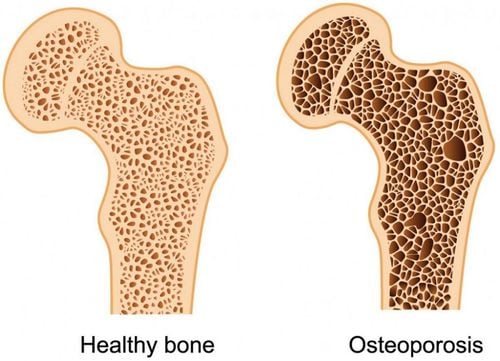This is an automatically translated article.
The article is professionally consulted by Master, Doctor Nguyen Van Thanh - Obstetrician and Gynecologist - Department of Obstetrics and Gynecology - Vinmec Ha Long International General Hospital.Currently, the number of people suffering from chronic pelvic pain is increasing, especially women. Pelvic pain is often dull and sometimes sharp in the lower abdomen. Although many people have been infected, not all of them really understand the disease. Join us to learn about chronic pelvic pain through the following article:
1. What is chronic pelvic pain?
Chronic pelvic pain is pain in the area between the belly button and between the hips, which can last for 6 months or longer. The pain can come and go suddenly, sometimes it can happen during menstruation or at certain times such as before or after eating, while urinating or during sex.2. Causes of Chronic Pelvic Pain
There are many causes of chronic pelvic pain. The cause can be from the urinary tract or intestines. Depending on the location of each person, the pain may be caused by their health condition. Some causes of chronic pelvic pain such as endometriosis, tight pelvic muscles, chronic pelvic inflammatory disease, uterine fibroids, irritable bowel syndrome, interstitial cystitis syndrome , pelvic congestion syndrome and psychological factors. There are also many cases where the exact cause of chronic pelvic pain cannot be found.
3. Diagnosis of chronic pelvic pain
To be able to diagnose chronic pelvic pain, you need to first see your doctor and provide complete information about your medical history, for example, you have had a history of pelvic inflammatory disease, or a history of radiation therapy or surgery in the abdomen or pelvis.... In addition, you should see a gastroenterologist or urologist for tests to find the cause of chronic pelvic pain. count.4. Diagnostic Tests for Chronic Pelvic Pain
Some tests to diagnose chronic pelvic pain include:Ultrasound : A test method that uses high-frequency ultrasound waves to create accurate images of the internal structures of the human body. This diagnosis helps detect tumors of the ovaries, uterus, or fallopian tubes.
Endoscopy: Is a modern medical technique that is applied in medical examination and diagnosis by using specialized instruments to observe directly inside the organs of the body. With laparoscopic techniques, people can film, take pictures of the inside of organs, remove foreign bodies, biopsies and even perform laparoscopic surgery.
Cystoscopy: A method that uses a cystoscope to look inside the bladder and urethra - parts that are not clearly visible through X-rays.
Colonoscopy : A test used to detect abnormal changes in the large intestine (colon) and rectum. This method helps diagnose colon diseases as well as find out the risk of cancer.
sigmoidoscopy: A simple method that helps to give detailed images of the damage of the sigmoid colon (the last part of the colon, shaped like the letter sigmoid), thereby determining the extent of the damage to the sigmoid colon. severity of the disease.

5. Some Treatments for Chronic Pelvic Pain
Methods used to treat chronic pelvic pain include: medication, physical therapy, nutritional therapy and surgery:In addition, you also need to change your lifestyle, implement an appropriate lifestyle. Combination and regular exercise can help relieve pelvic pain.
Doctor Nguyen Van Thanh has many years of experience in Obstetrics and Gynecology. The doctor was trained and attended courses in obstetrics and gynecology and infertility at Hai Phong University of Medicine and Pharmacy, Hanoi University of Medicine and Pharmacy and the National Hospital of Obstetrics and Gynecology.
References: Acog.org
Please dial HOTLINE for more information or register for an appointment HERE. Download MyVinmec app to make appointments faster and to manage your bookings easily.














